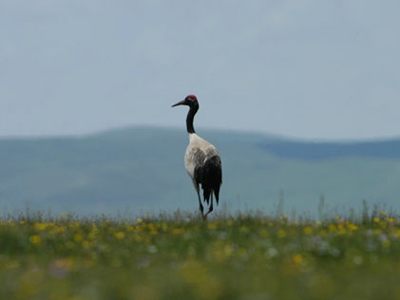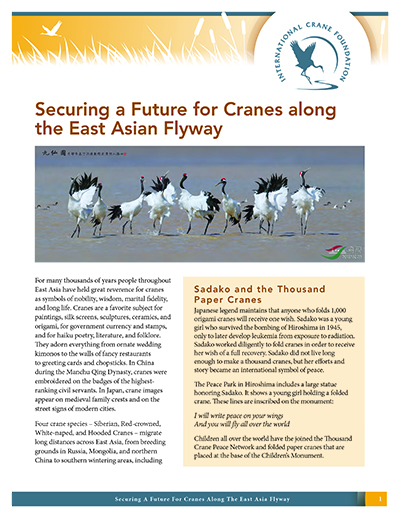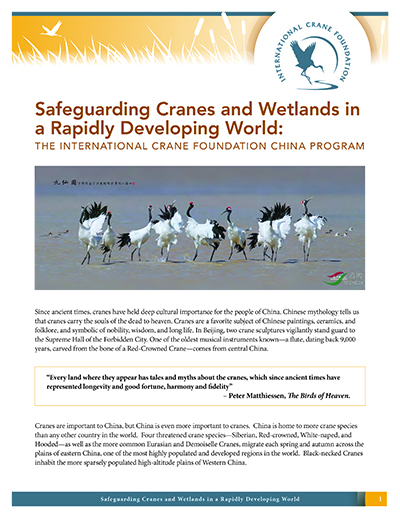Issue
East Asia is home to eight crane species, the most of any region. Five of these species are threatened – Siberian, Red-crowned, White-naped, Hooded and Black-necked Cranes. Intense land and water development pressures due to rapid economic growth threaten wetlands of vital importance to crane survival in this region.
Solutions
Our work builds on the strong cultural ties to cranes in East Asia, to engage local communities, resource managers, scientists and policymakers in the conservation of protected areas and their surrounding landscapes, including:
View our From the Field Webinar playlist: Securing the East Asian Flyway for Endangered Cranes.
Ensure healthy populations of Red-crowned, White-naped, Hooded and Siberian Crane populations in the Amur-Heilong Basin of Russia and China. We are:
- Supporting the development and implementation of water management plans that sustain crane habitats and preserve wetlands for wildlife, flood control, enhancement of water quality, fisheries and other harvests important to people at Zhalong, Momoge, Xianghai, Tumuji, Muraviovka and other key crane wetlands.
- Developing pilot projects in China and Russia that demonstrate community involvement with wetland conservation.
- Promoting cooperative research efforts between crane conservationists in Mongolia and the Amur-Heilong basin of Russia and China.
- Conducting environmental education activities among communities and stakeholders affecting critical crane habitats to increase local and national pride and commitment to conservation action.
Supporting increasing winter populations of Siberian, White-naped and Hooded Cranes and maintaining the extraordinary diversity of other waterbird species in Poyang and nearby lakes in southeastern China. We are:
- Determining the effects of different water management scenarios on cranes and their aquatic plant food base.
- Promoting ecosystem approaches to management, including strategies to manage degradation caused by water infrastructure and economic development within its basin.
- Collaborating with Chinese agencies, researchers and local communities to demonstrate how fisheries management and crane protection go together.
- Supporting efforts by management agencies and partners to identify and restore alternative wintering sites for cranes in southern China.
Expanding the size and range of Black-necked Crane populations in western China. We are:
- Supporting pilot projects to reduce degradation around key wetlands through alternative livelihoods and agriculture practices.
- Undertaking long-term monitoring of selected breeding areas to assess the impacts of climate change on cranes and key wetlands, and to develop measures for adaptation to climate change.
- Strengthening environmental education efforts at Cao Hai and Ruoergai, using these efforts as a model to increase community awareness and pride in crane conservation in other areas of China.

Partners
We work with numerous wetland nature reserves, relevant government agencies at national, provincial and local levels, research institutes and universities from throughout the region, local communities near the great crane places, and committed, highly active individuals who volunteer time and effort on behalf of cranes.
Resources
View documents from the multi-national Siberian Crane Wetland Project (2003 – 2009)




